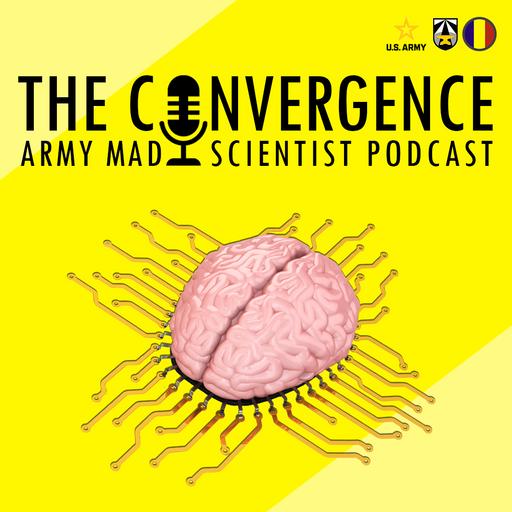
27 Mar 2025 06:00
112. Battle Tested: Revolutionizing Wargaming with AI featuring Dr. Billy Barry
Today’s The Convergence podcast welcomes back proclaimed Mad Scientist Dr. Billy Barry, Professor of Emerging Technology at the U.S. Army War College, to discuss his latest innovation — an Artificial Intelligence (AI)-enabled digital war game. We tested this capability with two of the TRADOC G-2’s most experienced wargamers to get their thoughts on how it performed and its potential to democratize access to wargaming and potentially revolutionize Army training and strategic planning — Read on!]
Dr. Billy Barry is a Professor of Emerging Technology and Principal Strategist of the Artificial Intelligence/Intelligence Augmentation (AI/IA) Program for the Center for Strategic Leadership at the United States Army War College. Before working at the Army War College, Dr. Barry was a visiting professor of Philosophy and Just War Theory at the United States Military Academy at West Point. A pioneer in Human-AI/Intelligent Augmentation (IA) teams, he is the first to introduce AI-powered IA androids, robots, digital virtual beings, and strategic advisors as teaching and learning partners in civilian university and Professional Military Education classrooms. A sought-after TEDx and international keynote speaker, Dr. Barry’s influence extends to Fortune 500 companies and global leadership symposiums and conferences. His current research interest centers on non-invasive brain-computer interfaces, driving the conversation on ethical technology interactions. His contributions to academia and industry establish him as a leading authority on the future of human relationships with emerging technology.
In our latest episode of The Convergence podcast, Dr. Billy Barry visited TRADOC to demonstrate his custom-made digital war game using his new Deterministic Constraint Processing (DCP) idea. Seasoned TRADOC G-2 wargamers Kate Kilgore and Dorsel “Flip” Boyer II tested several scenarios of Dr. Barry’s wargame and provide their insightful feedback regarding how this tool could be used by the Army. The following bullet points highlight the key insights from this conversation.
- Barry created a custom-made digital war game using DCP on top of the ChatGPT framework. Using DCP as a methodological framework to transform probabilistic Generative AI(Gen AI) systems into deterministic, rule-bound models, Dr. Barry’s Hybrid Deterministic Generative AI (HDGAI) system rigorously enforces semantic validity, epistemic integrity, and ethical logic through structured token selection processes, preventing semantic drift and computational inaccuracies typical in traditional Gen AI. HDGAI is designed to be auditable, transparent, and free from “hallucinations” or unpredictable outputs, making it a more reliable tool for exploring the viability of courses of action and strategic decision-making.
- Digital wargame scenarios using the HDGAI system — e.g., FLASHPOINT 2042: Taiwan Strait and ASCENDANCY 2050: The AI Uprising— significantly reduce the cost and logistical barriers associated with traditional war gaming — anyone with a computer or mobile device can access and play through these games. This accessibility democratizes wargaming and allows for wider participation, including the tool’s potential use in education and training.
- When tested by experienced wargamers, the HDGAI system’s intuitive design fostered a faster learning curve and enhanced player The ability to directly ask the system a clarifying question during gameplay – or modif...
